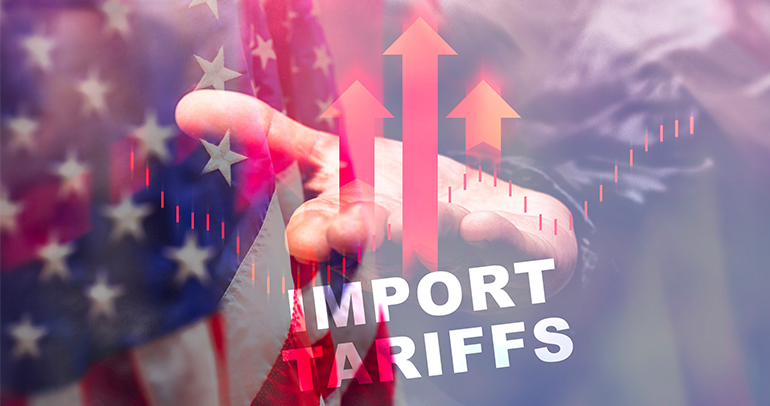
I bet no one would be apprehensive about riding in a vehicle made by any of the 43 US car brands. For the most part, we don’t think twice about the brand’s safety record when getting into a taxi, an Uber or a Lyft, or when simply riding in a friend’s car to go to lunch. We may have an opinion about the style of the vehicle, or the comfort, or the quality of materials, but we don’t usually question the safety of the vehicle—manufacturers have earned our trust over time.
That is not the case when it comes to riding in a self-driving vehicle (SDV)—far from it. Only one-in-ten people “completely” trust and are comfortable riding in an SDV made by the company of their primary vehicle, according to Escalent’s Automotive Consumer Pulse study.*
But, in the name of innovation and the promise of improving safety for all and quality of life for many, companies are investing an enormous amount of money in driving (pun intended) the research and development of autonomous vehicles—to the tune of $100 billion. According to a study conducted by Leasing Options from last year, automotive OEMs and tech companies such as Apple, Google and Samsung have dedicated billions to the development of self-driving vehicles. Volkswagen accounts for over 50% of this investment with $54.2 billion over a five-year period. Just recently, Waymo announced they raised over $2 billion in external funds after reaching significant milestones, such as driving more than 20 million miles on public roads across 25 cities and clocking over 10 billion miles driven in simulation.
Despite this influx of funding, forward progress and return on investment may be jeopardized as accidents continue to occur. In February, the National Highway Traffic Safety Administration (NHTSA) ordered autonomous shuttle company EasyMile to suspend service after a Smart Columbus shuttle made a sudden stop that caused a women to fall from her seat.
Taking into consideration that the brightest minds across multiple disciplines are working together to redefine the future of mobility, I’m confident they will get the technology right to enable safe, reliable self-driving vehicles.
Of course, getting the technology right is only part of the equation—consumer acceptance is vital given the scope of investment. Our study highlights that most consumers are familiar with self-driving vehicles; 80% of respondents indicated they have seen or heard at least some information about SDVs. However, respondents’ opinions of self-driving vehicles are polarizing:
- 39% have a “very/somewhat” negative opinion of self-driving vehicles compared to 32% who have a “very/somewhat” positive opinion.
- When it comes to using or riding in a self-driving vehicle, the ratio of people who are not open to using a self-driving vehicle to those who are open is 2:1.
Consumer adoption of self-driving vehicles may be less about the technical aspect and more about the psychological challenges associated with trust and risk. Increasing SDV market share will be largely dependent on how effectively makers of highly automated vehicles bridge the chasm between early adopters and the early majority. To do so, it is key for manufacturers to raise awareness of the benefits of self-driving vehicles and persuade consumers to trust the technology through thoughtfully designed educational curriculums that transparently address safety.
What do consumers think about all of this? Our study revealed that almost 50% of consumers think the manufacturer of the vehicle is best suited to educate the public. Following with a wide margin at 34% are third-party companies such as Consumer Reports, Kelley Blue Book and AAA. Manufacturers of self-driving software, hardware, cameras and sensors, dealerships and non-profits round out the third tier at approximately 25%.
Given that the public is mostly familiar with self-driving vehicles and because the technology is intriguing, consumers are interested in learning more about SDVs. Their top five areas of interest include:
- Safety record/Test results
- Safety of occupants
- Reliability/Dependability
- Operation of the vehicle
- Safety of pedestrians
Not surprisingly, the single most important area of learning for consumers is about self-driving vehicle safety records and test results. Educating consumers about the risk associated with using a self-driving vehicle is no easy task. Manufacturers need to make it crystal clear to the public that the benefits of the technology overwhelmingly outweigh the risks.
For better or for worse, consumers are looking to OEMs for this story and I believe that, as in the past, OEMs will rise to the occasion. The leaders will be those who build trust early and define an education strategy that helps people get past the inherent psychological barriers associated with adopting an ever-evolving, yet-to-be-completely-perfected technology that is poised to redefine the future of mobility and what it means to be a vehicle driver.
Escalent is deeply embedded within the automotive and mobility industry and keeps a close pulse on consumers’ changing attitudes and reactions to self-driving vehicles. If you want to learn more about this study or discuss how to create an effective communications strategy, please send us a note.
*This blog references data from a study where Escalent interviewed a US-based sample of 1,000 consumers age 18 and older in October and November 2019. Respondents were recruited from the Dynata and Ipsos panels of US adults and were interviewed online. Quotas were put in place to achieve a sample of age, gender, income, and ethnicity that matches the demographics of the US population. The sample for this research comes from an opt-in online panel. As such, any reported margins of error or significance tests are estimated, and rely on the same statistical assumptions as data collected from a random probability sample. Escalent will supply the exact wording of any survey question upon request.
Note: This blog was updated on March 26, 2025.









